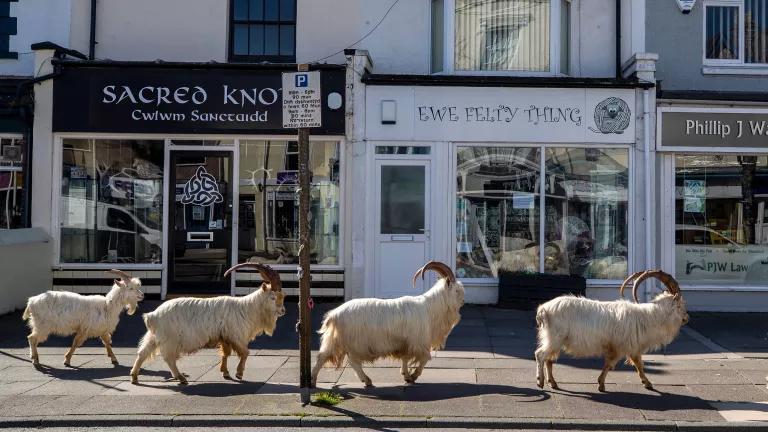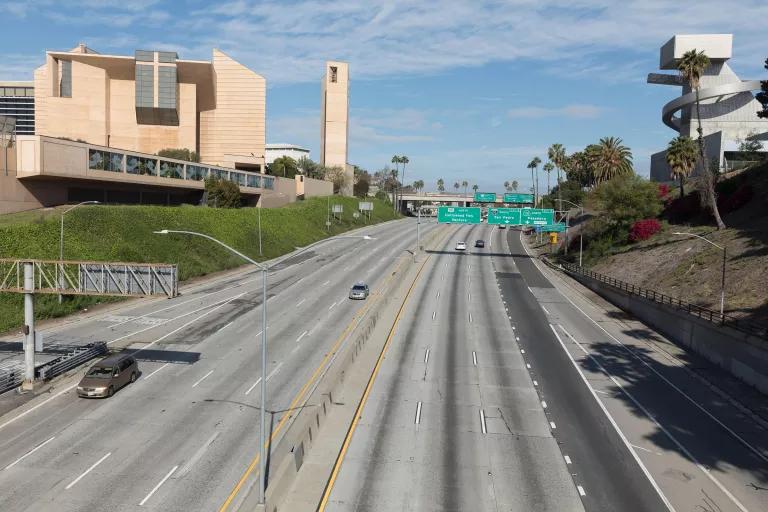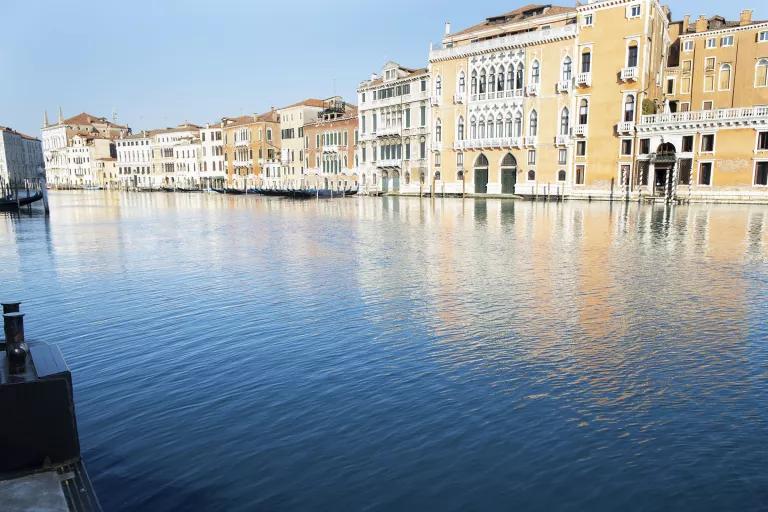We Can’t Go “Back to Normal.” We Have to Get to Someplace Better.
As the world slows down in response to COVID-19, we’re being given the chance to recalibrate our systems toward justice, equity, and planetary health.

A herd of goats take advantage of quiet streets near Trinity Square, in Llandudno, north Wales, in March 2020.
You might have seen them pop up on your social media over the past couple months: images of Venetian canals so crystal clear that swans—and even dolphins!—are cautiously returning to them for the first time in decades; of elephants sauntering into deserted Chinese villages and getting drunk on corn wine; of a lively family of wild boars taking advantage of empty Italian streets and making them their own. Some of these images may have been accompanied by hopeful captions along the lines of “the planet is healing” or “nature just hit the reset button.”
Most of these stories, alas, turned out to be fake. (The one about curious goats taking over a small Welsh town is true, however—and it’s awesome.) Amid the horrors of the COVID-19 pandemic, it’s understandable that people would want to look for some sort of upside to it; in that sense, these too-good-to-be-true tales may represent a kind of wish fulfillment fantasy born of our collective trauma. But as much as we might want to find one, there’s just no upside to a catastrophe that has already caused the deaths of more than 230,000 people around the world and brought the entire global economy to the brink of collapse. To posit a silver lining is to minimize the problem’s enormity.
With that said, it’s true that the prolonged interruption of everyday human activity—a function of the global response to the pandemic—seems to have given the planet a chance to slow down a bit. The disruption of our normal patterns of production and consumption means that global greenhouse emissions are likely to fall by nearly 8 percent this year. In China, carbon emissions decreased by 25 percent over a four-week period in February that corresponded with greatly reduced power generation capacity and the burning of coal. Los Angeles just had its longest streak of good air quality days since 1995, thanks in part to a statewide lockdown that has cut highway traffic nearly in half. Similar results have been seen in Seattle and New York City. All over the world, in fact, major cities known for their air pollution have recorded significant drops in the most dangerous forms of particulate matter, as lockdowns have gone into effect and would-be drivers and fliers have stayed home.

But experts are quick to point out that carbon emissions and other pollution will almost certainly rise again once the pandemic ends and countries start rebuilding their stalled economies. So, no: The planet isn’t “healing” while humanity suffers. But during this unprecedented and surreal gap—when the world is basically running at half speed—we are discovering where and how our present-day systems have failed us.
All of which should inspire us to ask an important question: When this is all over, can we really afford to return to normal?
The answer is no. We can’t. We have to get to someplace better.
The coronavirus has exposed the vulnerabilities and inequities built into our health-care infrastructures, social safety nets, and economies—aspects that must be addressed as quickly as possible. In the United States, we must reckon with the highly disturbing fact that poor people of color are suffering and dying from COVID-19 at dramatically higher rates than their well-off, white counterparts. We’re also witnessing what happens when we don’t invest enough resources in public health. And we’re seeing the horrific, real-time results of putting political ideology before science. This is where “normal” has gotten us, and if we settle for getting back to it—for returning to the politics of marginalization, irresponsibility, and science denial—we will find ourselves here again when the next disaster strikes.

But we don’t have to settle for that. Images of a blue-sky, almost bucolic-looking Los Angeles or of clear Venice canals (even if they don’t have swans or dolphins in them) are like snapshots of the future from a time-travel movie: They’re meant to show us what’s possible if we accept the challenge of transforming our systems and ourselves. To show us what’s possible if we rethink our dependence on fossil fuels as our chief energy source and our reliance on gasoline-powered cars as our primary means of transportation. To show us what’s possible if we reject and actively fight back against the idea that pollution is simply the price we must pay for economic progress. To show us what’s possible if we come together, across countries and generations and ideologies to address climate change and mitigate its most grievous manifestations.
They’re images of a better world: one with clearer horizons, cleaner waters, and lower carbon footprints. In that world, we can also expect to find healthier communities. But to get there, we must insist on greater commitments to the ideals of economic, racial, and environmental justice, and governments being more responsive to the needs of all citizens—not just the wealthiest or most politically connected. The architects of the Green New Deal understand this; it’s why they explicitly tied their plans for climate action and transitioning to a clean energy economy to plans for creating jobs and reducing economic inequality. In addition, groups (including NRDC) have called for recent stimulus bills to include money for energy-efficiency programs and public transit—and have fought against handouts for oil companies.
As hard as it can be to believe right now, this pandemic will end at some point. But in the meantime, we need to start reimagining how our society should work. Don’t let anyone fool you into thinking that it will be quick or easy; it won’t be. But at the same time, don’t let anyone fool you into thinking that the goal should be to get back to “normal.” We don’t have to go back. And we shouldn’t.
A FINAL NOTE: This OnEarth “Culture & Politics” column—my 162nd!—will be the last of its kind. It’s been my pleasure and honor to bring these to you over the past several years, and I look forward to engaging with you in new and different formats as I continue to write for NRDC on these same topics, as well as others. Thanks for reading.
This article was originally published on onEarth, which is no longer in publication. onEarth was founded in 1979 as the Amicus Journal, an independent magazine of thought and opinion on the environment. All opinions expressed are those of the authors and do not necessarily reflect the policies or positions of NRDC. This article is available for online republication by news media outlets or nonprofits under these conditions: The writer(s) must be credited with a byline; you must note prominently that the article was originally published by NRDC.org and link to the original; the article cannot be edited (beyond simple things such grammar); you can’t resell the article in any form or grant republishing rights to other outlets; you can’t republish our material wholesale or automatically—you need to select articles individually; you can’t republish the photos or graphics on our site without specific permission; you should drop us a note to let us know when you’ve used one of our articles.


“Forever Chemicals” Called PFAS Show Up in Your Food, Clothes, and Home
The Particulars of PM 2.5
The Smart Seafood and Sustainable Fish Buying Guide